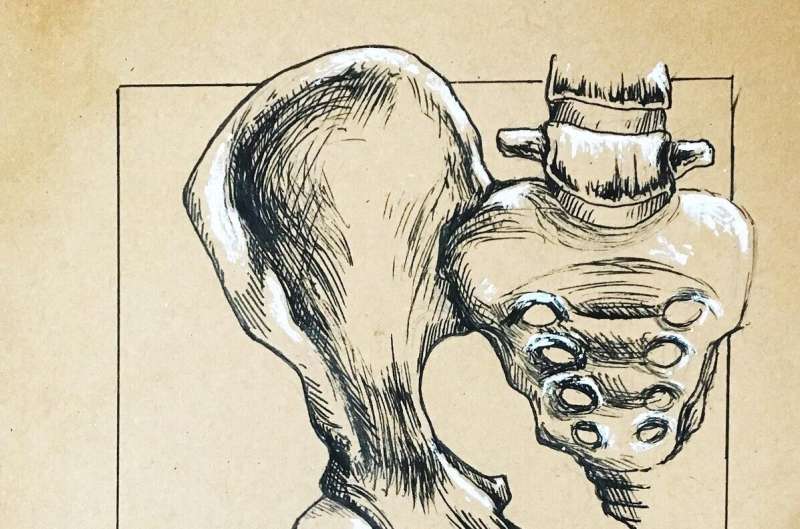
A large trial has found that using high-dose dual-antibiotic loaded cement is unlikely to reduce the risk of surgical site infection in people who have had a hip replacement.
In recent years, there has been a significant increase in the use of antibiotic-loaded bone cement in hip fractures treated with hemiarthroplasty—the replacement of the head of the femur.
In this trial, the research team compared the rate of deep surgical site infection in patients aged over 60 receiving high-dose dual-antibiotic loaded cement with standard care single-antibiotic-loaded cement. The findings have been published in The Lancet.
The study, part of the White 8 Trial, was led by researchers from the University of Oxford’s Nuffield Department of Orthopaedics, Rheumatology, and Musculoskeletal Sciences (NDORMS) and supported by the NIHR Oxford Biomedical Research Center (BRC). It is sponsored by the Northumbria Heathcare NHS Foundation Trust and managed by Oxford Trauma, at the University of Oxford.
The main author, Professor Matt Costa of NDORMS, said, “Over the last two years, based upon previous smaller trial data, there has been a big increase in the use of high-dose, dual-antibiotic bone cement. However, this large-scale trial shows that there is unlikely to be a benefit in terms of reducing the risk of surgical site infection.
“Furthermore, our associated health economic analysis suggests that the more expensive high-dose dual antibiotic cement is unlikely to be cost effective. I would anticipate that these findings will change clinical practice and reverse the trend of using this new bone cement.”
Almost 5,000 patients undergoing cemented hemiarthroplasty at 26 U.K. hospitals took part in the trial. Half were randomly allocated to a standard care single-antibiotic loaded cement, with the other half given the high-dose dual-antibiotic loaded cement. The level of deep surgical site infection was then measured after 90 days.
Some 1.7% of the participants in the single-antibiotic loaded cement had a deep surgical site infection after 90 days, compared to 1.2% of those in the high-dose dual-antibiotic loaded cement group.
The trial also assessed quality of life, mortality, antibiotic use, mobility and residential status after 120 days.
More information:
Nickil R Agni et al, High-dose dual-antibiotic loaded cement for hip hemiarthroplasty in the UK (WHiTE 8): a randomised controlled trial, The Lancet (2023). DOI: 10.1016/S0140-6736(23)00962-5
Journal information:
The Lancet
Source: Read Full Article



